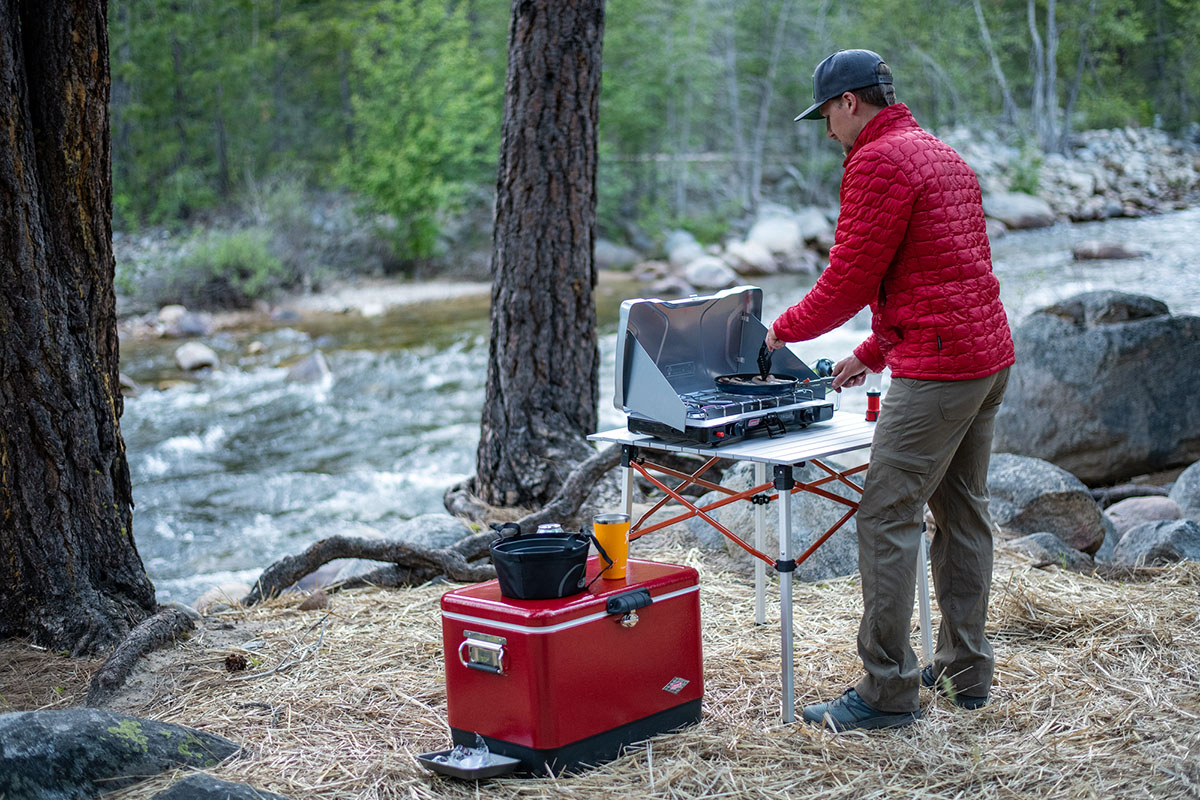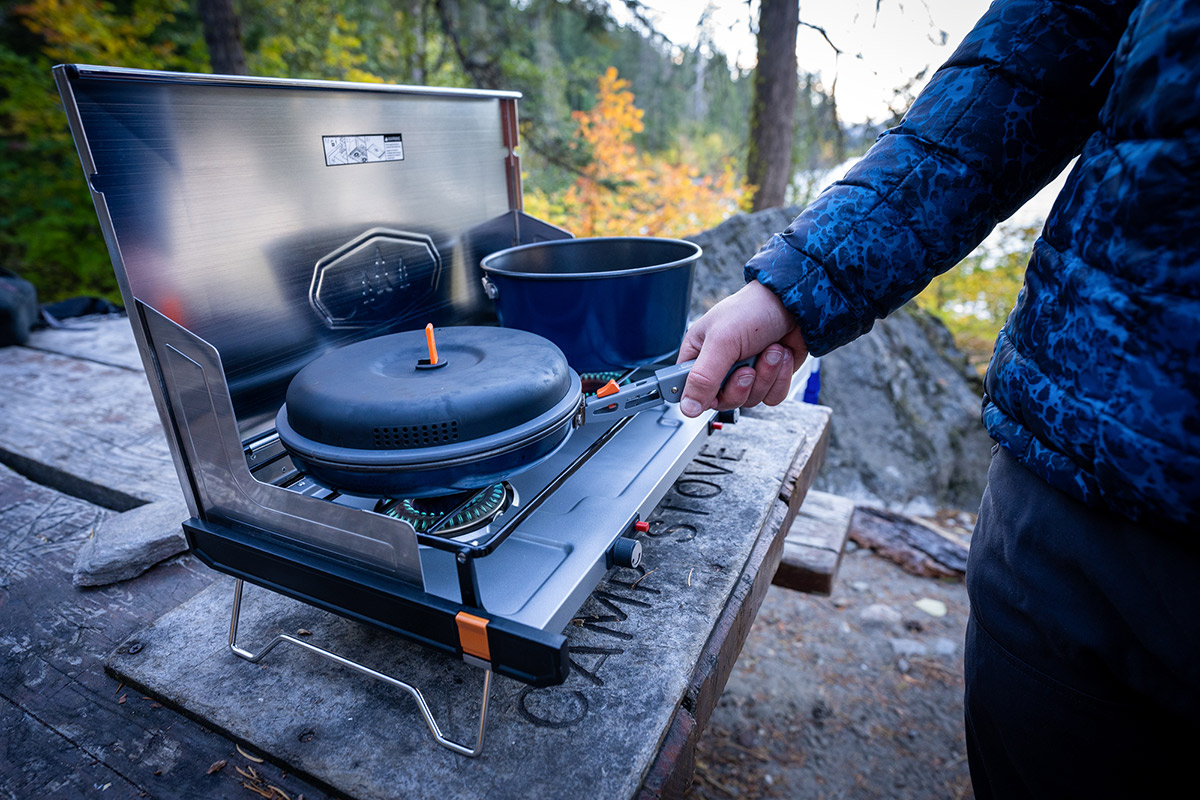How to Choose a Reliable Camping Stove
When it comes to outdoor adventures, having a reliable camping stove is essential for preparing meals, boiling water, and staying comfortable while camping. Whether you’re hiking through the wilderness, car camping, or enjoying a weekend getaway, a good stove can make all the difference. With so many options on the market, it can be challenging to know where to start. In this article, we’ll guide you through the key factors to consider when choosing the best camping stove for your needs, ensuring that your outdoor cooking experience is convenient and hassle-free.
1. Consider the Type of Stove
The first step in choosing a camping stove is determining which type is best suited for your camping style and cooking preferences. Here are the most common types of camping stoves:
- Canister Stoves
Canister stoves are compact, easy to use, and often the most popular choice for car camping or short backpacking trips. These stoves use pre-filled gas canisters (usually butane or propane), which are lightweight and easy to carry. They heat up quickly and provide consistent performance in moderate conditions. - Liquid Fuel Stoves
Liquid fuel stoves are ideal for those who camp in remote areas or need a stove that can handle extreme temperatures. They run on liquid fuels like white gas, kerosene, or unleaded gasoline, making them more versatile than canister stoves. Liquid fuel stoves are a great choice for long-term backpacking or winter camping because they are reliable and can be refueled in the field. - Alcohol Stoves
Alcohol stoves are simple, lightweight, and budget-friendly options for solo campers or minimalists. They use alcohol-based fuels like denatured alcohol or rubbing alcohol. While alcohol stoves are slower to cook compared to other stoves, they are efficient, very portable, and easy to maintain. - Wood-Burning Stoves
For campers who want to avoid carrying fuel altogether, wood-burning stoves are an excellent option. These stoves 
2. Check the Stove’s Size and Weight
The size and weight of a camping stove will depend on the type of camping you plan to do. Consider the following:
- Backpacking: If you plan to hike long distances with all your gear, a lightweight and compact stove is crucial. Look for stoves that are small, easy to pack, and lightweight, such as canister stoves or alcohol stoves. These stoves typically weigh between 3 to 10 ounces.
- Car Camping: If you’ll be driving to your campsite and don’t need to worry about weight, you can opt for a larger stove with multiple burners, such as a liquid fuel stove or a larger canister stove. These stoves are generally heavier but offer more cooking power and stability for preparing larger meals.
- Family Camping: For group or family camping trips, you may need a stove with multiple burners to cook meals for several people. These stoves tend to be bulkier but provide ample cooking space for larger pots or pans.
3. Cooking Performance and Power
The power of a camping stove is measured in BTUs (British Thermal Units), which indicates how much heat the stove can produce. If you’re planning to cook simple meals like instant noodles or boil water, a stove with lower BTUs (around 6,000-10,000 BTUs) should suffice. However, if you’re cooking more complex meals, including meats or larger pots of food, you may want a stove with a higher BTU output (above 10,000 BTUs).
Other cooking performance factors to consider include:
- Simmer Control: Having precise control over the heat is important for dishes that require gentle cooking or simmering. Look for a stove with an adjustable flame or simmer control for better versatility in meal preparation.
- Wind Resistance: Some stoves come with built-in windshields or wind-resistant features that help maintain a stable flame even in breezy conditions. This feature is particularly important if you’re camping in areas where wind is a common challenge.

4. Fuel Availability and Compatibility
The type of fuel your stove uses is a critical consideration when choosing a camping stove. Make sure to choose a stove that uses a fuel source that is easily available for your destination:
- Canister Stoves: Gas canisters are widely available at outdoor stores and online, but you’ll need to check the specific type of fuel required for your stove (butane, propane, or a combination). Canisters are often more expensive than liquid fuels and can be difficult to find in remote areas.
- Liquid Fuel Stoves: Liquid fuel stoves are versatile, but they require a specific type of fuel. White gas is widely available at outdoor retailers, while kerosene and unleaded gasoline may be more accessible in remote locations. Make sure you can easily find fuel in the areas where you plan to camp.
- Alcohol Stoves: Alcohol fuels like denatured alcohol are easy to find in most hardware stores, making alcohol stoves a practical and cost-effective choice.
- Wood-Burning Stoves: The advantage of wood-burning stoves is that they don’t require pre-packed fuel, as they burn twigs and small branches found in nature. However, availability of fuel can be a concern in areas with limited natural materials.
5. Ease of Use and Setup
A camping stove should be easy to set up, use, and maintain. Consider the following:
- Ignition System: Some stoves come with built-in piezoelectric ignition, which eliminates the need for matches or a lighter. This feature is convenient, especially when your hands are cold or wet.
- Setup Time: Look for a stove that’s quick and simple to set up. Canister stoves and alcohol stoves typically require minimal setup, while liquid fuel stoves may require priming before use.
- Maintenance: Some stoves, like liquid fuel stoves, may require periodic maintenance, such as cleaning the fuel line or replacing seals. If you’re new to camping, choose a stove that’s easy to maintain or opt for a canister stove, which requires less upkeep.

6. Durability and Build Quality
Since camping stoves are used outdoors and in rugged conditions, durability is an essential consideration. Look for stoves that are made from high-quality materials such as stainless steel, aluminum, or rugged plastic. These materials can withstand the elements and last for years of camping trips.
If you’re purchasing a stove for regular use or longer trips, ensure it’s designed to endure harsh weather conditions and be resistant to scratches, rust, and dents. Stoves with sturdy windshields and secure valve connections are also important for long-term reliability.
7. Price and Warranty
Camping stoves come in a wide price range, from budget-friendly options to high-end models. Keep in mind that while it’s tempting to go for the cheapest stove, sometimes investing a little more can provide better reliability, performance, and longevity.
Look for stoves that come with a manufacturer’s warranty, as this can give you peace of mind knowing that you can get a replacement or repair if something goes wrong. However, don’t feel like you need to overspend. There are plenty of reliable and affordable camping stoves that provide great performance for their price.
Conclusion
Choosing the right camping stove can significantly enhance your outdoor cooking experience. Whether you’re cooking a simple meal or preparing an elaborate feast in the wilderness, selecting a stove that suits your needs is key. Consider factors like stove type, size, cooking performance, fuel compatibility, and ease of use when making your decision. By evaluating your cooking needs and preferences, you can find a reliable camping stove that will make your outdoor adventures more enjoyable and stress-free. Happy camping!









Post Comment